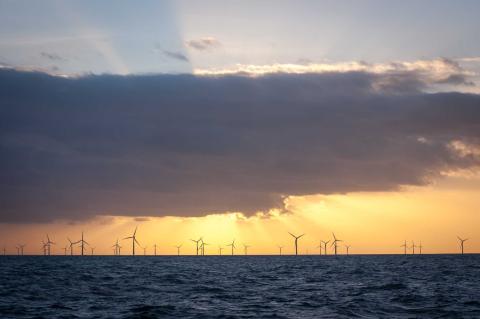
- Increasing construction activity at sea means that a greater proportion of our critical infrastructure, particularly offshore renewable energy, is exposed to the effects of climate change on the marine environment.
- Sea levels are rising around the UK at an accelerating rate, increasing flood and erosion risk to critical coastal assets (e.g. energy, transport and water).
- Water temperatures in our seas and estuaries are increasing around the UK, impacting marine species distribution and the efficacy of cold-water cooling applications.
- Higher sea levels and more severe storms are increasing the risk to operations which are sensitive to weather-related disruption. These include disruption to ports and shipping through flooding, high winds and waves, heatwaves, cold snaps and fog, and disruption to operation and maintenance of marine infrastructure from weather downtime.
Medium evidence, medium agreement
Access to data and information remains difficult. Industry (consultancy and private companies) have difficulty accessing contemporary academic literature. Additionally, much of the progress in understanding of climate associated risk to infrastructure is undertaken within companies and is considered commercially sensitive and not published. As a result, the exchange, review and dissemination of emerging understanding between the scientific community and industry is poor, with the primary source of collaboration between those two groups being restricted to discrete research funding projects and word of mouth.
- Sea level is likely to continue to rise at an accelerated rate with an associated increase in flood and coastal erosion risks to ports and coastal infrastructure.
- Increased frequency and severity of storms is anticipated to result in increased disruption to shipping affecting port operations, and greater costs for operation and maintenance of marine structures.
- Increased need for forecasting and early warning systems to manage marine risk, for example ferry services, and operation and maintenance of marine infrastructure.
- The trans-Arctic shipping route, currently only navigable during summers with limited ice sheet extent, could be navigable four to eight months of the year by 2100.
- Increasing seawater temperatures, particularly in semi-enclosed shallow coastal areas such as estuaries, are expected to affect the design and licensing of cooling and wastewater discharge systems.
Low evidence, medium agreement
Confidence with regards to assessments of potential future impacts to coastal and marine transport and infrastructure is intrinsically linked to the robustness of future climate change projections. For sea-level rise, projections have relatively high levels of confidence irrespective of emission scenario and there is a recognition of reductions in sea-ice extents and sea-surface temperatures. Conversely, while industry is aware of the broad risks associated with climate change, confidence in the projected future patterns of some impacts (including changes to storms and waves) remains low, with significant spatial variability and conflicting model simulations. Notwithstanding that low confidence, with significantly more of our energy infrastructure in the marine environment, including offshore windfarms, tide and wave power generators, electricity transmission infrastructure as well as telecommunications cables, the risk of climate-related damage is expected to increase.
The overall confidence assessment has not changed from the previous paper, and we conclude that the amount of evidence remains low on the future impacts of climate change on marine and coastal transport and infrastructure.
Top challenges
- The accelerated expansion of the marine renewable energy sector means a significant proportion of nationally critical infrastructure is being built in the marine environment. This infrastructure is also being deployed in deeper and more-exposed offshore locations, along with an increasing network of associated transmission cables and interconnectors. The risk of damage to our energy network from climate change related storm events is therefore increasing.
- As the lifespan of the marine infrastructure is extended, there is a need for improved data and models on changes to weather parameters, most notably wind and wave regimes, to adapt designs to a changing climate.
- There is also a need to better understand and share the information on how climate change affects infrastructure performance, deterioration, and threshold failure.
Top emerging issues
- The growth in marine renewable energy is significantly increasing demand for port area needed for the construction, operation, and maintenance of offshore windfarms. The ongoing expansion of the marine renewable energy sector and the advancement of decarbonisation technologies are expected to further increase the need for port facilities and infrastructure.
- There is a call from industry to understand the interdependencies and cascading risks to nationally critical infrastructure, and to the UK Government to provide the mechanisms for these to be investigated and mitigated (The Joint Committee on the National Security Strategy, 2022).
- The level of understanding of climate-related impacts is increasing unevenly across sectors. Whilst evidence and data on flood damage and coastal erosion is abundant and available, information on storm damage to offshore infrastructure remains limited. This knowledge gap may be addressed from 2023, as companies are required to report climate risks under The Companies (Strategic Report) (Climate-related Financial Disclosure) Regulations 2022. Financial institutions are also seeking a greater understanding of these issues for borrowing and insurance, making understanding climate-associate risk increasingly business-critical.
* Image - Crown Copyright